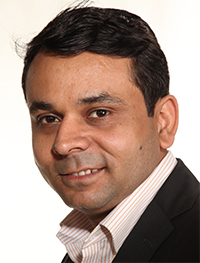Cognizant’s Center for the Future of Work recently published the whitepaper, Humans + Intelligent Machines: Mastering the Future of Work in the Asia Pacific Economy. The paper details the results of a recent survey of business and IT executives at leading companies across the Asia Pacific region and the trends relative to the transition to intelligent machines.
The world of work is changing faster than ever, and machine intelligence is at the center of this change. For many reasons, businesses in the Asia Pacific are particularly well positioned to benefit from the influx of AI into their operations, processes, workflows and business models. Aggressive government policies pertaining to artificial intelligence, a freedom from legacy assets and an abundance of data have put the region in a bright spot for the adoption of intelligent machines. According to UBS, AI will produce economic value in Asia-Pacific of between US$1.8 trillion to US$3 trillion a year by 2030.
To learn more about how organizations in the Asia Pacific are preparing for the future of work with intelligent machines, Cognizant’s Center for the Future of Work surveyed 622 top business and IT executives at leading companies across the Asia Pacific region. Our research reveals the following important trends, whose impact in some cases will soon ripple around the world:
- The age of human + intelligent machine has truly arrived.
- The economics of intelligent machines is an unstoppable force.
- The message is loud and clear: Invest or be left behind.
- Preparation for change is crucial.
Based on our findings, we’ve developed a framework to help traditional businesses systematically move toward the new world of work with intelligent machines. To get there, organizations must align five elements (5Ts) – tasks, teams, talent, technology and trust – to successfully transition into the new machine age.
“The future of work will be shaped by two inevitable and powerful forces: the growing adoption of intelligent machine and the future partnership between humans and machines,” writes Manish Bahl, Senior Director, Center for the Future of Work in Asia Pacific. “Striking a balance between the two will be the biggest opportunity and challenge for organizations.”
Click here to read the full report.

